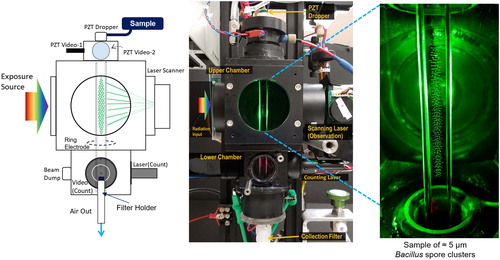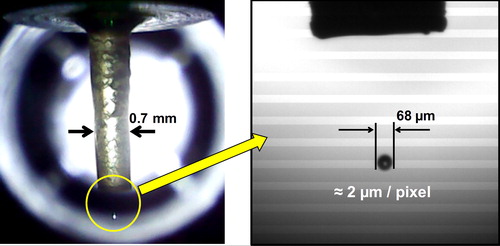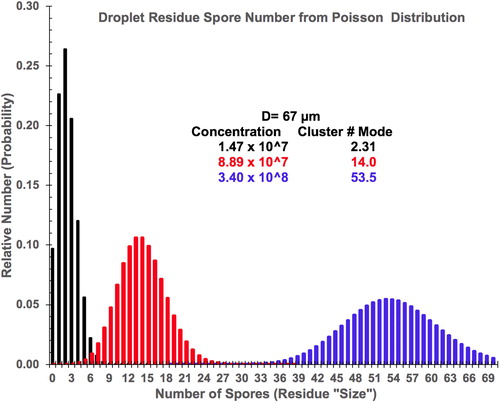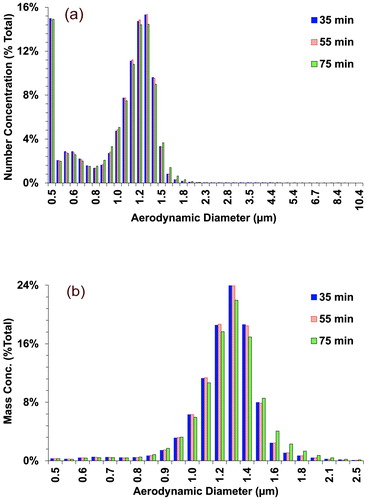Figures & data
Figure 1. The process of bioaerosol generation from a liquid sample microdroplet dispersion is depicted schematically from left to right. Droplets formed from a homogeneous suspension, result in individual particle compositions that reflect the relative proportions of the original sample.

Figure 2. The schematic on the left shows the configuration of a piezoelectric transducer droplet generator, and a linear electrodynamic quadrupole trap aerosol chamber divided into upper and lower sections by an electric gate (ring electrode). A photo of the apparatus is shown in the middle. The photo on the right is an enlarged view of the interior of the upper chamber showing a suspended spore particle sample (between 200 and 300 particles).

Figure 3. Two camera images of piezoelectric transducer droplet formation process are shown. The left photo shows the quartz capillary (70 µm ID), and the right photo shows a higher resolution image of typical droplets.

Figure 4. Computed frequency of occurrence, or probability distributions, of the number of spores per droplet are shown for a 67 µm diameter droplet at three target concentrations as indicated in the color-coded legend.

Figure 5. (a) Particle aerodynamic diameter distribution of the Bacillus thuringiensis Al Hakam powder sample material was measured with a TSI Aerodynamic Particle Sizer. Normalized data obtained with the Vilnius Aerosol Generator shows a consistent PSD shape at three arbitrary times up to 75 min. (b) Using the number count data, an equivalent sphere mass distribution vs. aerodynamic diameter was computed, showing that 98% of total aerosol mass is accounted for by aerodynamic diameters less 2.0 µm. An expanded horizontal scale allows a clearer view of data.

